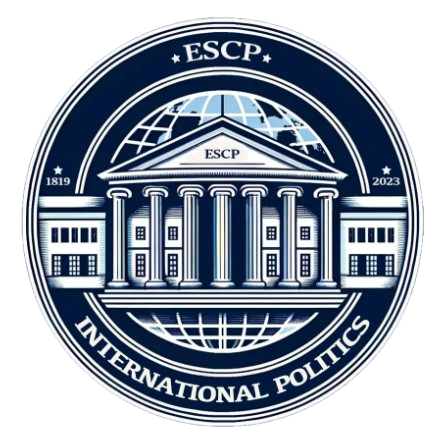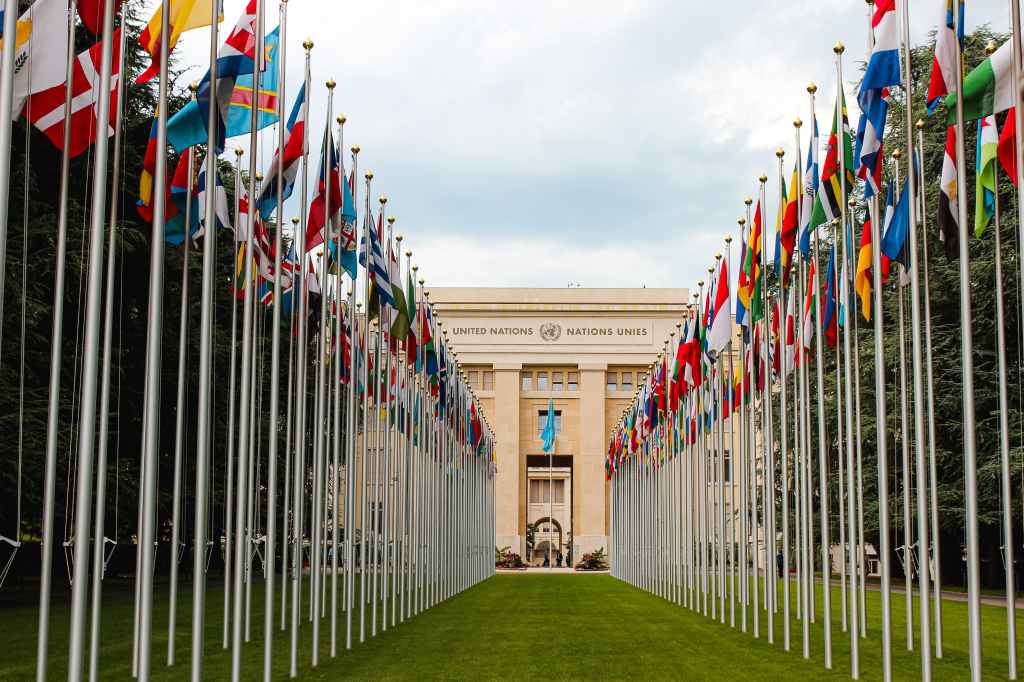By Corey A. Hancock (ESCP PhD student & serving U.S. Diplomat).
For students of diplomacy and international relations, having a working knowledge of how countries interact is a fundamental part of their academic studies. Throughout their degree programs, they will take various courses and hopefully win exciting internships, enabling them to observe how countries communicate. Their coursework will provide them with a theoretical understanding, and their internships will allow them a more practical and up-close view of how governments engage with one another. For most countries in Western Europe, the US, and other world players, the 3D model is the structure or the foundation of foreign policy. Grouping all government interaction into a diplomacy, development, or defense bucket is a way to categorize and best understand international affairs.
Diplomacy largely consists of negotiations or bilateral interactions between two sovereign governments or multilateral fora. Diplomacy tends to represent the steady state of affairs, or the category that will encapsulate the majority of inter-governmental actions. In conducting diplomacy, governments engage around a wide variety of issues, including topics as varied as: trade deals, airline rights, migration protocols, phytosanitary standards, international public health emergencies, forestry issues, votes in the United Nations, etc. As the coordinating entity of diplomacy, foreign ministries often issue demarches instructing their Ambassador in a foreign capital to engage with their host-country counterparts to deliver certain talking points around a specific issue. The ensuing discussion, the persuasion skills of the diplomat, and the additional tools at the disposal of the diplomat (International Visitor Leadership Program, Fulbright programs, etc.) play a large role in determining the outcome of the discussion. For the practitioner, diplomacy requires strong intercultural skills, familiarity with complex foreign languages, and the willingness to travel to very distant lands. To be diplomatic means to be fair, tactful, and effective, in carrying out the art of diplomacy.
If, during the course of diplomacy, one country observes that another country is underdeveloped [1] and in need of foreign assistance, they may offer development assistance. Development is a means for one country to provide financial resources and/or technical assistance to another country to allow them to overcome an obstacle. Development often includes projects in the areas of health, education, economic growth, environmental conservation, democracy promotion, as well as disaster response assistance (following a natural disaster). Development organizations are wide and varied, including the Agence Francaise de Developpement (AFP), the United States Agency for International Development (USAID), the United Nations Development Program (UNDP), AUSAID, FCDO, amongst many others. Development is not charity, as oftentimes it serves to expand the sphere of influence of the donor country. Development professionals (most of whom hold diplomatic status) tend to take foreign postings in Africa, Asia, and Latin America, often living and working in conflict-ridden countries. The best foreign assistance projects are sustainable, advance the bilateral diplomatic agenda between countries, and provide meaningful assistance to beneficiaries while producing some benefit for the donor country [2]. My next column will be on how development assistance must be win/win for both the donor and the benefitting country.
The final category to classify foreign policy is defense. When diplomacy is strained, and if development is either not effective, or perhaps rejected by the host country, defense remains the last option. Military action by one country is certainly one of the most controversial parts of a country’s foreign policy and the decision to use it must be taken very seriously. Many countries have domestic laws and there are also international laws that govern when and how military force can be used, and multinational fora also provide a venue for discussions to avoid using force. The decision to send troops into a foreign land is inherently dangerous and must always represent the absolute last option. But war is still a part of foreign policy – the fighting is a more archaic interaction between two countries. As Clausewitz famously remarked, “War is a mere continuation of policy by other means” [3]. However, during armed conflict, the laws of combat must be respected, and civilians must be protected at all times. During the conflict, there must be very active diplomacy behind the scenes to bring a prompt end to any human suffering caused, and hopefully resolve the underlying issue in short order.
As students of political science and diplomacy, we know that the implementation of theories always tends to vary. Thus, while not a perfect example, the conflict in Israel and the Gaza Strip is illustrative. As of November 13, 2023, all 3 of the Ds are ongoing in Gaza – military action, intense diplomacy, and incipient development efforts. Defense operations are – of course – the most dangerous and are ongoing on the ground at high risk to all entities. The diplomacy is largely being safely conducted in distant foreign capitals allowing diplomats to negotiate an end to hostilities. However, for the development practitioner, no such comforts are available. Somebody needs to actually transport the commodities to the affected areas and deliver them to the beneficiaries. The security situation does not lend itself to a robust development agenda. However, upon the conclusion of military activities, additional foreign assistance will be available, in terms of dollars of foreign aid and in terms of actual development workers on the ground. This assistance will be key to rebuild from the catastrophes of war.
Showing the circularity of the model, upon the conclusion of the defense operation, development projects often follow in quick succession. These projects often aim to immediately restore basic services damaged during the war, including clean water, electricity, medical supplies and other short-term projects to enable the country to rebuild after the war. This thus starts a continuation of the 3D cycle. Although diplomacy is the steady state, development is an oft-used tool in statecraft. War or even the threat of war is correctly exceedingly rare and one that is best used sparingly. General Jim Mattis, former U.S. Secretary of Defense was a pro-development military officer; he was once quoted as saying that if the USAID were not to be robustly funded, he will need to buy more ammunition.
In conclusion, foreign relations are an intricate area of study. Students who major in this area will explore the full gamut of possibilities and become practitioners in a multifaceted and complex world. Having a comprehensive understanding of how the tools of statecraft can be used to achieve the goals of their government will enable them to be effective players on the world stage. The 3D model is an easy way to classify and understand how international relations play out in an increasingly complex world.
Edited by Justine Peries.
Disclaimer: The views expressed in this presentation are solely the views of the author, and do not reflect the views of the United States Agency for International Development nor the United States Government.
References
[1] Countries are nominally divided into a trichotomy of developed, developing, and underdeveloped countries according to economic data and other indicators.
[2] Deutscher, Eckhard, and Sara Fyson. “Finance & Development, September 2008 – Improving the Effectiveness of Aid.” International Monetary Fund, https://www.imf.org/external/pubs/ft/fandd/2008/09/deutscher.htm. Accessed 24 November 2023.
[3] OLL Liberty Fund. “Clausewitz: War as Politics by other Means | Online Library of Liberty.” Online Library of Liberty, https://oll.libertyfund.org/page/clausewitz-war-as-politics-by-other-means. Accessed 24 November 2023.
Cole, Beth. “Fostering Diplomatic-Defense-Development (3D) Cooperation in Responding to Complex Crises.” United States Institute of Peace, 6 December 2017, https://www.usip.org/publications/2017/12/fostering-diplomatic-defense-development-3d-cooperation-responding-complex. Accessed 24 November 2023.
Syed, Nafees Asiya. “The 3 D’s of Foreign Affairs.” Harvard Political Review, 2010, https://harvardpolitics.com/the-3ds-of-foreign-affairs/. Accessed 24 November 2023.
[Cover Image] Photo by Mathias Reding , Title: “Flag of different countries UN members”, Licenced Free to use under Pexels https://www.pexels.com/license/ .



Leave a comment